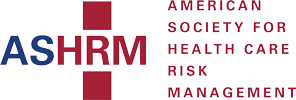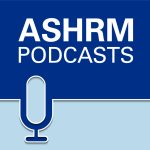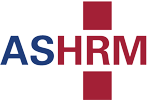Financial planning is a critical part of enterprise risk management (ERM) programs. The American Society of Health Care Risk Management’s ERM model addresses financial risk identification and management. Financial risk identification is paramount in maintaining a healthy financial portfolio. When losses are identified, setting money aside to cover a loss is standard practice. This action is known as reserving or earmarking. Reserves are created to pay present and future claims. A claim is defined as a demand for something, often for monetary compensation. Claims occur during grievances, hospitalizations, post discharge, after visiting with family or friends, after a doctor visit or treatment, before a lawsuit is filed, or during litigation. A claim can be asserted at any time in written or oral form.
RESERVING PRACTICES
Reserving is not an easy task. It is both an art and a science and can be particularly complex in professional liability claims. Reserving practices are at the heart of claims management. Not only are solid practices essential for managing individual claims, not having them represents significant risks across the enterprise. Reserving practices can have synergistic effects in multiple ERM domains that can result in creating or eroding value.
Whether an organization is self-insured, has a deductible or maintains its own captive insurance program, reserving and financial planning must occur to aid in financial stability, risk projection, risk mitigation, as well as identifying trending and benchmarking data once an FNOL (first notice of loss) is received. Understanding an organization’s reserving methodology is essential to accurately project future losses, as well as sustaining the financial solidarity of its current accounting ledgers.
BEST PRACTICES
Best reserving practices include the development and implementation of processes and procedures that provide clear and concise guidance, which addresses reporting criteria; reserving methodologies for primary, reinsurance and excess reporting; reservation of rights; and bad faith. These guidelines should include recommendations for all lines of coverage to include Professional Liability, General Liability, Property, Worker’s Compensation, Environmental, E&O, D&O, Auto, Crime, Cyber, Aviation, Employer’s Liability, Commercial, Excess and Reinsurance. The foundation of a strong reserving practice is to reserve a loss at the most probable outcome at the earliest possible point when a loss is identified. This exercise should be completed within 90 to 180 days of the matter being opened. Below are a few key points that should be addressed and defined in an organization’s reserving manual or practice guidelines:
- Indemnity reserving
- Expense reserving
- Excess and reinsurance reserving
- Reserving timelines
- Primary, excess and reinsurance reporting criteria
- Defense counsel reporting criteria
- Settlement authority levels
- Components of a loss run
- Bad faith claims
Every organization and insurance company has an interest in mitigating and preventing bad faith claims, which can be expensive. By definition, a bad faith claim is when a plaintiff asserts there was a breach in duty or contract, failure to pay promptly, settle or investigate a claim.
DETERMINING VALUE
During the initial phase of awareness of a potential loss or claim, financial forecasting and reserving must be established so money can be set aside for current and future payments. Earmarked money is used to settle and resolve anticipated losses on behalf of an insured. Determining the value of a loss or claim can be challenging at best. Proper evaluation and assessment must be completed in order to determine the most probable outcome.
There are two sides of a claim: clinical and legal. When initial facts are known about a claim or incident, the risk manager or adjuster then can establish initial reserves for indemnity and expense. Indemnity is used for payment for injuries sustained by a claimant or plaintiff. Expense is used for payment for things such as legal expenses, attorney fees, expert fees, copy fees, court costs and mediation fees. The initial facts of a claim or incident should include historical information, facts of the event, severity of the injury, any subsequent treatment needed, details about the care team involved and any current or historical information about the medical provider. Thereafter, any subsequent treatment rendered, communication with the family or representative, as well as any demands made should be preserved in the file documentation. When appropriate, interviewing involved staff at the direction of defense counsel can help determine the validity of a claim. This is usually done at the direction of defense counsel to preserve and protect work product. On the clinical side, the Chief Medical Officer (CMO) may review and opine. External medical experts may be retained as well. On the claims side, once a value is determined, the process for obtaining settlement authority is triggered. Typically, the matter is presented to a claims committee for discussion to obtain settlement authority for resolution if the value exceeds the risk manager or adjuster’s authority. Defense counsel may participate in the claims committee discussion if warranted. Obtaining jury verdict searches can also prove to be helpful when valuing a loss. Verdict data helps gauge and target values relating to specific injuries, as well venue considerations.
LOSS RUNS
Financial information is usually recorded and stored in a claims software program. Insurance carriers will have one of the various claims software programs for data management. However, not all organizations or those insured have a budget to support this type of software and may rely on Excel spreadsheets to manage their internal data. Claims software is designed to capture relative financial information. This information includes the insured’s name, date of loss, date reported, policy number, policy year, total incurred and total paid. Once the claims system is populated, a report is generated and is known as a “loss run.” Loss runs can be provided by an insurance company or an organization and can be filtered, sorted and printed any way a requestor wants. Insurance carriers and credentialing departments also request and use loss runs to aide in their decision making. Ensuring proper language at the top and bottom of any loss run is required to invoke available protections to ward against discoverability.
CLAIM DATA
Claim data can be used to identify and correct clinical issues, which may result in improved patient safety. Data can also be used to support the development, continuation and funding of quality and risk management programs by demonstrating value added and return on investment. Claims data generated from loss runs are often used to trend organizational frequency and severity, along with benchmarking against other same or similar organizations. Claim data can also be used in litigation management programs to track and monitor defense counsel performance, outcomes, as well as management of legal costs.
Commercial, reinsurers and excess carriers audit claims data. Weaknesses or gaps in reserving practices can result in financial consequences to an organization. Carriers may require operational changes, ranging from evidence of developing and executing an improvement plan to mandated educational program attendance when the data point to a particular problem that is causing and creating risk.
When an organization creates and executes solid reserving practices, claims are managed effectively, creating value throughout the organization.
RESERVE AUTHORITY
If the facts of a loss support a value that is greater than the risk manager or adjuster’s general authority, a formalized report must be written and submitted to the appropriate governing body for additional authority, which is usually a Claims Committee. The role of a Claims Committee is to facilitate conversation surrounding the legal and clinical aspects of a claim, identify any patterns or trends, discuss risk prevention and mitigation, as well as determining patient safety needs. A Claims Committee consists of senior leaders –such as a Chief Executive Officer, Chief Financial Officer, Chief Medical Officer — in-house general counsel, risk manager or adjuster, as well as any clinical ad hoc members. The committee appoints a chair to keep meeting minutes. These minutes will record any settlement authority given to the risk manager or claims adjuster. Recordkeeping should be thorough to reflect the discussions at each meeting. Any material dispersed during a committee meeting should be gathered at closing and not allowed to leave the meeting.
TAKEAWAYS
At the end of the day, the fundamental and crucial aspect of claims management is to ensure accurate and timely reserving, which prevents financial erosion throughout the enterprise. Reporting to carriers (excess and reinsurance) is required to ensure proper coverage is available and triggered at the time of a loss. Each file should be documented thoroughly to include an analysis of liability, damages, value, as well as plan of action and resolution strategy. Remember, the best file is a closed file. Capping an organization’s risk is pivotal to financial stability and success.
References
Roberta L. Carroll, RN, ARM, MBA, CPCU, CPHQ, CPHRM, HEM, DFASHRM, LHRM, lead author. (2014). Enterprise Risk Management: A Framework for Success. American Society for Health Care Risk Management, Chicago, IL. Retrieved November 2019 from https://www.ashrm.org/system/files/media/file/2019/06/ERM-White-Paper-8-29-14-FINAL.pdf
Hallmark Financial Services, Inc. (2017) Best Practices for Healthcare Claims; Reserving Memorandum and Guideline; page 15.
Healthcare Claims and Litigation Playbook(Vol. 1, Playbook). 2019. Chicago, IL: ASHRM.
Kalra, Parin. (2019, February). Modeling Approaches to Claims Reserving in General Insurance. Property Casualty 360. Retrieved October 2019 from https://www.propertycasualty360.com/2019/02/11/modeling-approaches-to-claims-reserving-in-general-insurance/?slreturn=20190623150556
Author Leigh Ann Yates, AIC, MBA, CPHRM, DFASHRM, is the president and CEO of Risky Business Consulting and a Senior Health Care Consultant at Hallmark Financial Services








